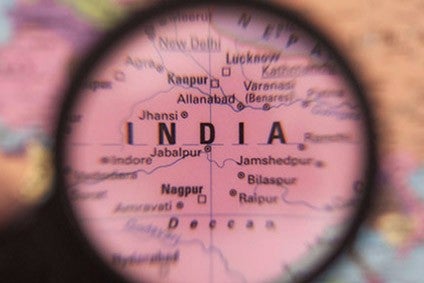
The Indian clothing and textile manufacturing sector is facing renewed disruption as the country is hit by a brutal second wave of Covid-19.
“Labour has [partially] gone, production is down and demand is falling,” Sanjay Arora, business director at consultancy firm Wazir Advisors, told just-style. Spinning mills are running on reduced capacities, as 15% to 20% of their workforce is suffering from Covid-19, he says.
India suffered its worst day of the pandemic on Wednesday (28 April) reporting 360,960 new cases in the previous 24 hours – the largest single-day increase in the world – and a further 3,293 deaths. The country’s death toll has now reached 201,187.
The surge in infections is expected to impede manufacturers’ ability to fulfil delivery contracts.
“We have good [export] orders, but because of the pandemic, migrant workers are leaving garment clusters, especially in Maharashtra, Delhi, Bangalore,” says Arora.
With clothing manufacturing restricted by labour disruption, demand for polyester fibre has also fallen, causing problems for spinning mills. These businesses do have orders for exports, which are unaffected, but distribution is a headache, because the pandemic has hit container and shipping line operations.

US Tariffs are shifting - will you react or anticipate?
Don’t let policy changes catch you off guard. Stay proactive with real-time data and expert analysis.
By GlobalDataAlso, spinners were relying on domestic demand, and had not focused on planning for shipping contingencies – a problem given cargo slots need to be booked well in advance, noted Arora.
The latest problems could upset the financial recovery made by Indian clothing and textile companies from October to February, he warns.
Continuing to operate
Kandasamy Selvaraju, secretary general of Southern India Mills Association, says he is happy that the government is at least allowing the industry to continue operating. He argues that some “workers will be safer in the factories rather than at their homes,” given the density of the residential population in many Indian cities.
He is not expecting the government to rescue the industry with additional major subsidies.
“Last year, the government had to spend 21 lakh-crore of rupees [INR21 trillion – US$282 billion] on a relief fund, and you cannot expect the government to come up with relief measures again because we don’t have the funds.”
Selvaraju stresses that the new Covid-19 wave is preventing crucial face-to-face meetings: “Everything cannot be done online. In textiles, people have to see the fabric designs.”
Logistical challenges
Ujwal Lahoti, owner of Mumbai-based Lahoti Overseas, which supplies yarn, fabric and raw cotton to Indian garment exporters and overseas customers in China, Bangladesh, Vietnam, Latin America and Europe, agrees that the current crisis poses major logistical challenges.
To maintain their labour force, workers often have to remain within the factory to prevent outside infections, so they have to be fed and housed on site.
Every worker must be regularly tested for Covid-19. “To make arrangements for all this labour in-house is a really big task. Factories are running with an average of 50 percent efficiency,” he says.
Each factory has some workers staying on the campus, with companies needing special travel passes for external labour to be brought inside their factories.
Such disruption will inevitably hit production and deliveries, Lahoti says.
“There will be losses,” although the clothing and textile industry’s customers are being kept informed. “All those who can take the delayed shipments are accepting them and those who cannot are cancelling.”
“Shipping lines have increased their freight charges and the number of vessels has been reduced. The availability of containers is also getting very poor. That is also a very big challenge for the exporters,” says Lahoti.
Different lockdown rules
One logistical problem is that every Indian state has introduced different lockdown regulations.
Chandrima Chatterjee, current director for compliance, economics and consultancy at the Apparel Export Promotion Council, says most clothing and textile manufacturing cluster plants have “been able to continue with production.”
She says that exports from key states such as Tamil Nadu, Maharashtra and Rajasthan are expected to continue. “It is not last year’s scenario,” when the export trade ground to a halt, she says.
While the capital Delhi is under lockdown until 3 May, garment manufacturing facilities in the Indian state of Karnataka have been permitted to operate with 50% of their workforce during its current two-week lockdown.
The state went into lockdown on Tuesday (27 April), with an official order asserting all social, political, sports, entertainment, academic, cultural, religious functions, and other gatherings and congregations are prohibited and religious places will remain closed for the public until 12 May.
According to local reports, all industries, industrial establishments and production units related to garment manufacturing are permitted to operate provided they adhere to Covid appropriate behaviour.
In a statement posted to the AEPC LinkedIn page yesterday (28 April), Apparel Export Promotion Council (AEPC) chairman, A Sakthivel, thanked textiles minister Smriti Zubin Irani and Yediyurappa for allowing garment manufacturing units to operate as requested.
“Apparel exporting units are labour intensive and most of them are migrants from other states. Closing down factories would have made it difficult to get them back. Factory closures would have led to default in delivery of export orders to foreign buyers, loss of credibility, and a significant reduction in export earnings.
“Most of the apparel manufacturing units are also manufacturing medical textiles, PPE kits, and masks for both domestic and international markets,” he noted.
According to credit ratings agency ICRA, which is part of Moody’s Investors Services, India’s garment sector may not see a full recovery to pre-Covid levels until 2023.
With additional reporting by Beth Wright.



